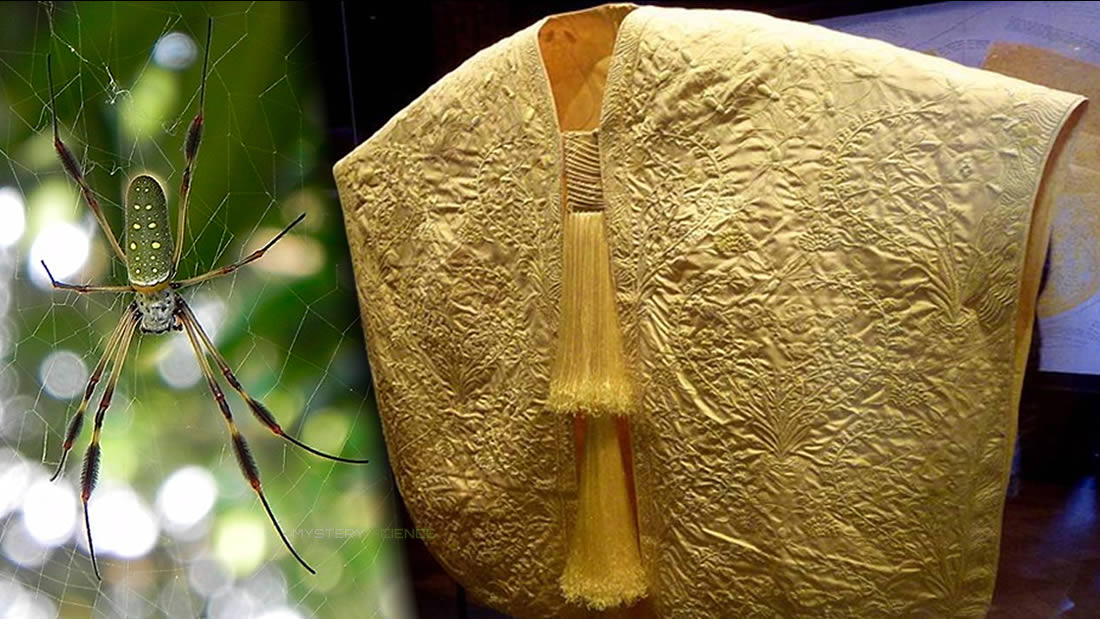In the vast and fascinating world of textiles, there are countless materials that have captured the attention of humanity over the centuries. From fine Chinese silks to luxurious European velvets, every culture has developed their own methods and materials to create unique fabrics.
Fascinating material is discovered
It is a textile that stands out above all for its rarity and wonder. It’s a silk fabric of a million spiders.
This incredible achievement was achieved by Simon Peers and Nicholas Godley, two visionaries who decided to embark on an almost impossible mission. They began collecting silk from Madagascar golden arachnids (Nephila madagascariensis) for create a fabric without equal.
A beautiful story behind the project
The idea of using the tissues of these animals is not newIn fact, attempts to collect and use this silk date back centuries. However, the difficulty lies in the very nature of spiders.
Unlike silkworms, which can be reared in large numbers and produce silk continuously, spiders are territorial. Even when in the company of other people, they become cannibalistic, making them extremely difficult to breed in captivity.
A sophisticated system for extracting silk
Peers and Godley were undeterred by the challenges, rather than trying to replicate them, they decided to collect the silk directly from wild spiders. To do this, they developed an ingenious method: they captured female arachnids and placed them in a special device that allowed them to extract the silk without hurting them.
 Giant golden weaver spider.
Giant golden weaver spider.
After collecting the silk, the animals were released again in nature. After a week they could generate silk again if it was the rainy season, since this type of spiders only produces silk during this season, so they were captured between the months of October and June.
Collection and weaving process
Collecting enough silk to create a single square meter of web required the collaboration of thousands of spiders. Each of them only produces a small amount of golden-colored fibers, so The process was extremely laborious. and it took more than four years to complete the project.
In total, it is estimated that It took about a million, to produce enough yarn for the final fabric.
Once collected, the silk was spun and hand-woven using traditional techniques into a shawl or cape.
 The process was repeated for four years until the necessary quantity was obtained to make the blanket.
The process was repeated for four years until the necessary quantity was obtained to make the blanket.
They meet the objective
Despite the difficulties, they obtained extraordinary results, achieved a shiny gold fabric. Thanks to the natural properties of golden spider silk from Madagascar, it is a color that does not fade over time, making the textile even more stunning.
The unique properties of spider silk
The silk of this small animal is known for its exceptional properties. It is incredibly durable, stronger than steel in terms of tensile strength, it is both extremely light and flexible. These properties make this particular fabric a highly sought-after material for different uses, from textiles to biomedicine.
In addition to its resistance, it also has antibacterial properties and is biocompatible. Which means it can be used in medical applications without causing unwanted reactions in the human body.
 Spider silk in the weaving phase. Credit: John Brown.
Spider silk in the weaving phase. Credit: John Brown.
These properties have led to ongoing research into the use of spider silk in surgical sutures, implants and other medical devices.
A cultural and scientific treasure
He fabric created by Peers and Godley It is not only a masterpiece of craftsmanship, but also a cultural and scientific treasure. It represents a fusion of traditional knowledge and modern technologies. Additionally, it is a reminder of the incredible diversity and potential of nature.
This might also interest you: Egyptian dress made 5,000 years ago is the oldest in the world.
Today, this unique fabric exhibited in museums and galleries from all over the world, where it continues to amaze visitors with its beauty and rarity. It is a testament to the power of human creativity and nature’s ability to inspire and surprise.
Testimony to human ingenuity and the wonders of nature
 Despite its fineness, spider silk performs well under tension during weaving, demonstrating extraordinary elasticity and strength.
Despite its fineness, spider silk performs well under tension during weaving, demonstrating extraordinary elasticity and strength.
Silk fabric is undoubtedly one of the rarest and most fascinating textiles of the world. Its creation required a combination of ingenuity, patience and dedication.
The result was a work of art that defied expectations and celebrate the wonders of nature. By admiring this fabric, we are reminded of the incredible diversity of our planet.
A publication of Mysterious science. All rights reserved. – Redistribution and redistribution of this content without prior consent is expressly prohibited. Website protected by Safe Creative.
Thank you for reading us. We invite you to follow us on our Facebookto be up to date with all the news we publish daily. You can also join our community on Telegram. We are waiting for you!
